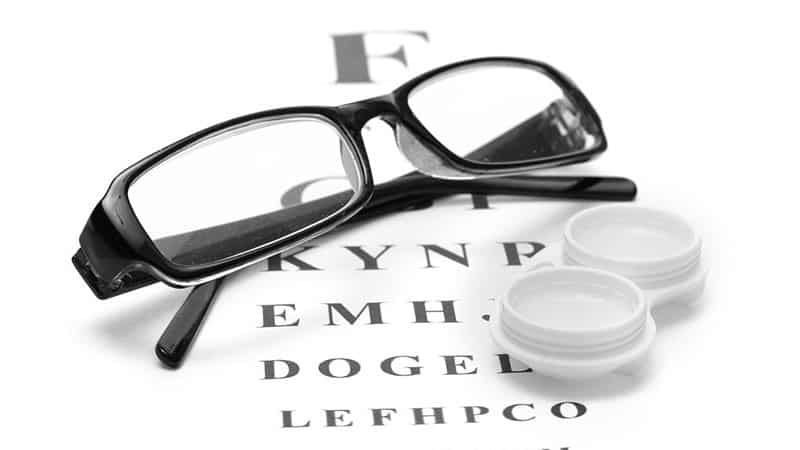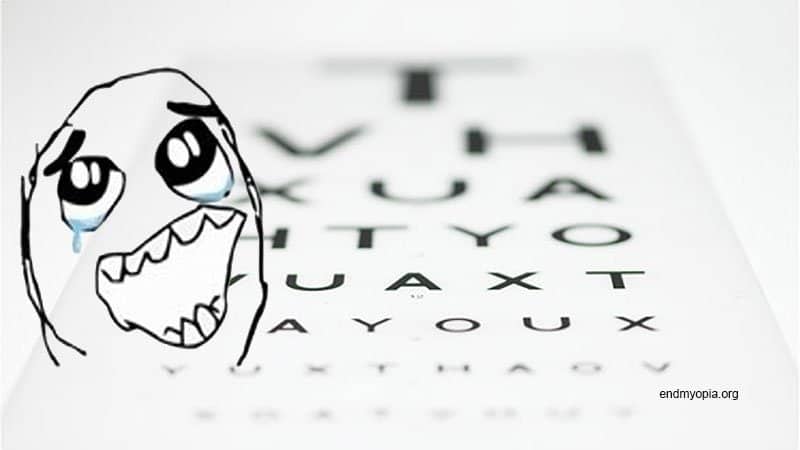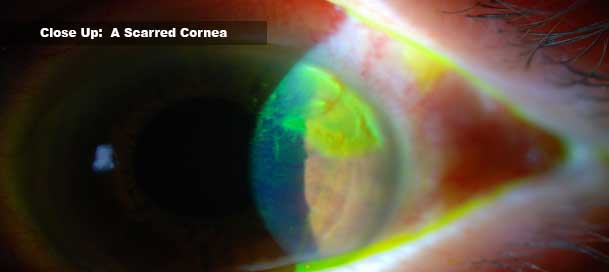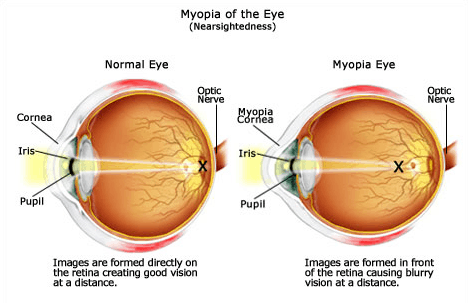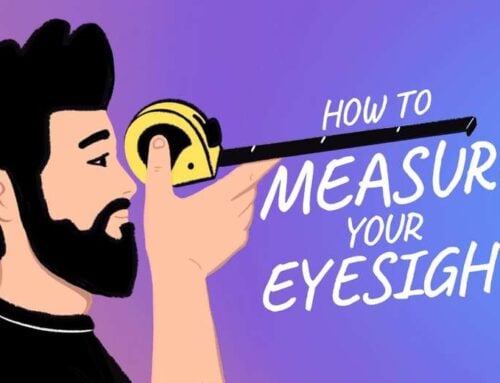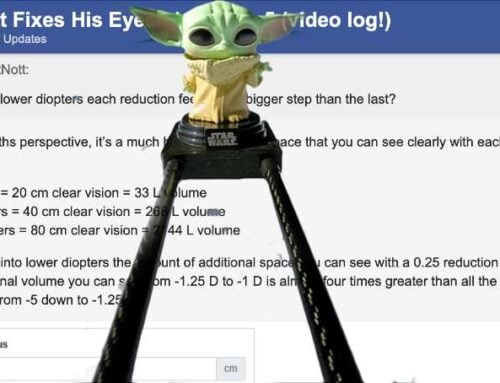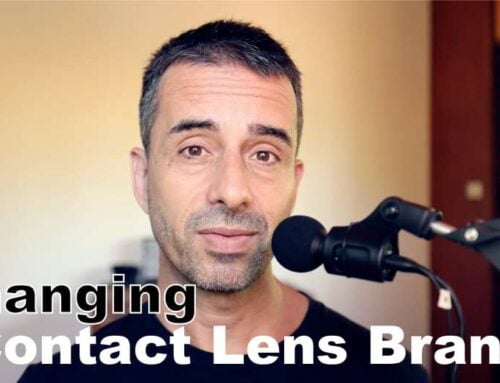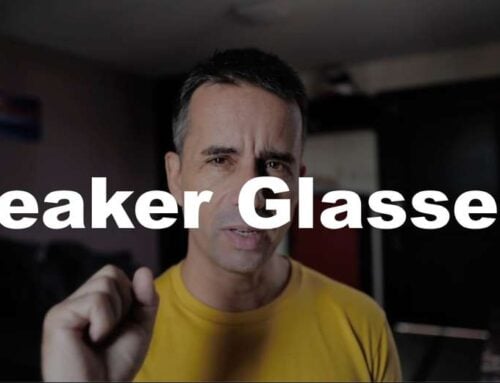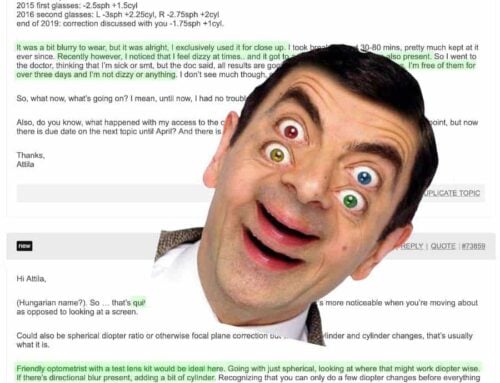Heads Up: If you’re online looking to buy -1 diopter contact lenses, you’ll want to read this before ordering a new pack.
You’ll want to know about what those contact lenses do to your eyes, before you go out and buy them. From potentially inducing progressive myopia, to corneal abrasion, to the question whether you actually even have myopia, this 2 minute read is for you.
1. Did you know that next year the -1 contact lenses won’t be enough, and you’ll need an even higher prescription?
Yes, wearing a -1 contact lens all day, every day, is going to significantly increase the likelihood that your eyesight will get worse by an average of 0.50 diopters per year (number varies based on habits and genetics).
And no, the lens manufacturer is not going to tell you about this!
But it is well documented in clinical science. For example, the Journal of the College of Optometrists directly admits that minus lenses (like your -1 contact lenses) are a contributor to increasing myopia.
Verbatim, this is what they say:
“Refractive correction of myopia will lead to accelerated progression.”
Yup, that’s your contact lenses they are talking about.
The Journal of Investigative Ophthalmology takes this a step further, by suggesting that using an entirely different type of lens than your -1 contact lens, can actually stop the progression of your myopia (eyesight getting worse). If you want to dig into that topic, take a look at this detailed post.
But that’s just the start of it. It gets worse:
2. Contact lenses are a serious contributor to corneal abrasion (your cornea getting scratched – permanently).
It’s true. Contact lenses disrupt tear fluid delivery and can lead to your cornea becoming scratched, which in turn leads to vision problems that can’t be corrected.
What makes this a lot worse is close-up use of contact lenses. It’s one thing to use contacts while outside (where it’s perfectly all right). But when you sit in front of a computer for hours, your blink rate is reduced by as much as 5x. And blinking is what helps deliver tear fluid, which is now seriously reduced, and that’s before factoring in the blocked access due to the contact lens.
Want to read more about all the nasty business of corneal abrasion? Here you go.
Of course the contact lens manufacturer will sell you artificial tears, which is both nicely profitable for them, and will get you addicted to yet another product (artificial tears lower your natural tear production).
And here’s what’s most interesting:
3. There’s probably nothing actually wrong with your eyes right now.
That’s right. A -1 diopter contact lens might actually mean that you just have pseudomyopia right now. As in, not real, actual, problematic irreversible you-need-glasses-forever myopia.
It’s actually quite common. In medical science it’s also referred to as NITM (near-induced transient myopia), and it’s just a focusing muscle (ciliary) spasm.
If you do continue to wear that -1 lens though, pseudomyopia eventually becomes lens-induced myopia, which tends to be progressive (gets worse) and leads to potential complications down the road (fatigue, depression, migraines, retinal attachment problems, glaucoma, etc).
Here’s a great article on how pseudomyopia happens, and how myopia is often mistreated.
Read all that, before you go out and order contact lenses. And if you want to learn more about eye srain, how to measure your own eyesight, how diopters work, and most importantly how to get your eyesight back, see my free course below.
Cheers,
-Jake

